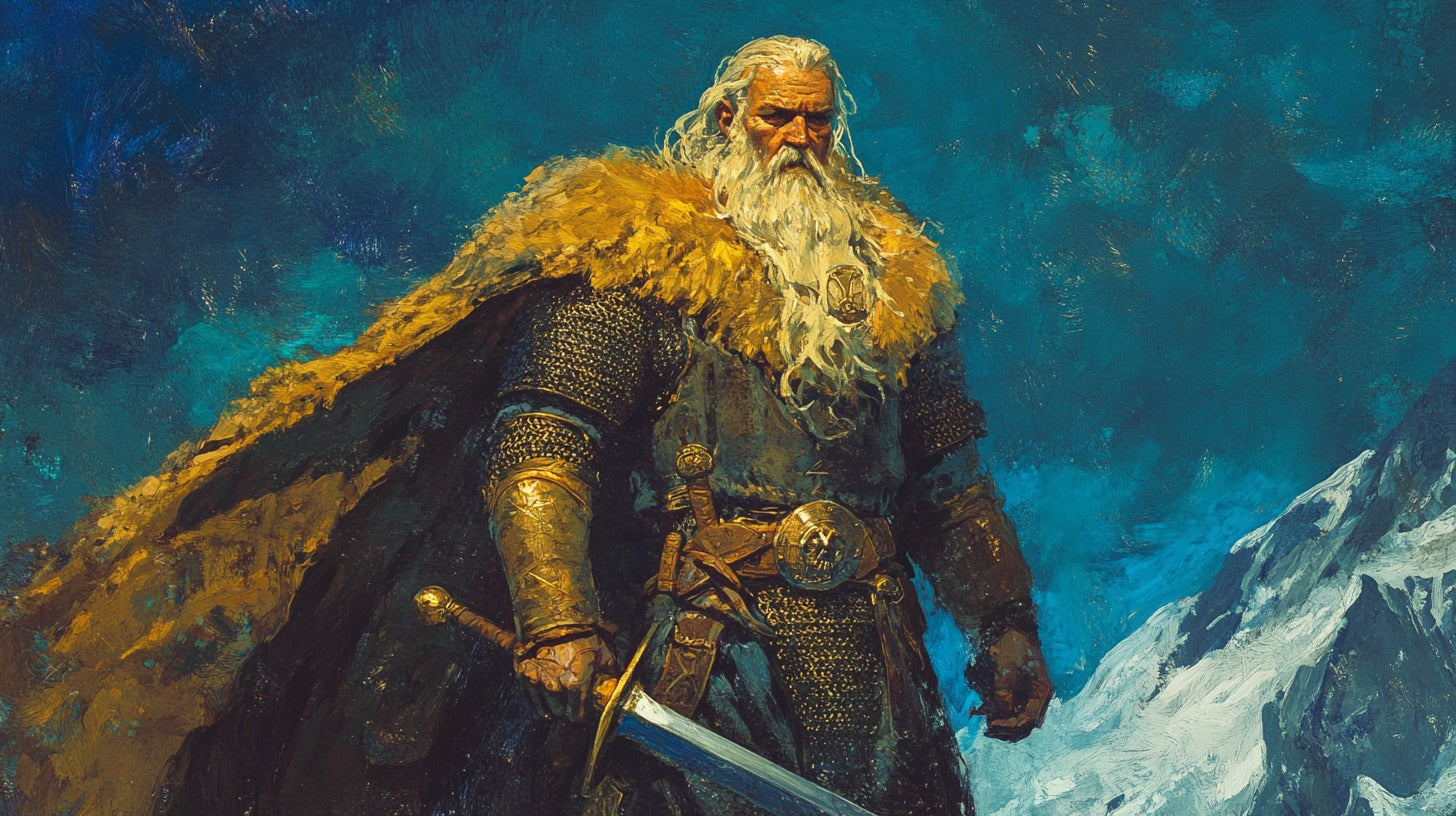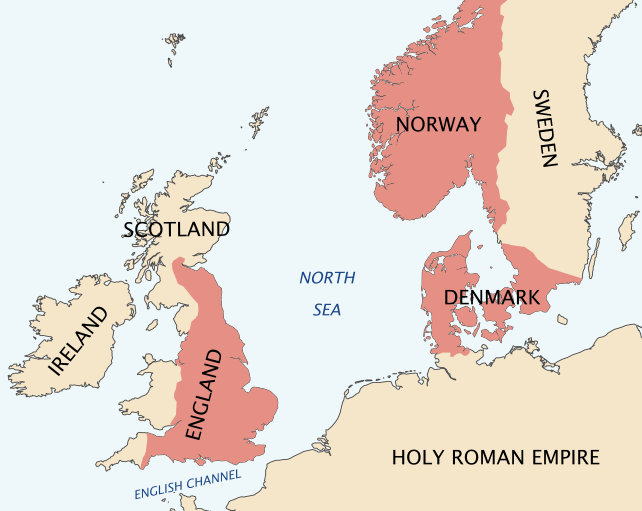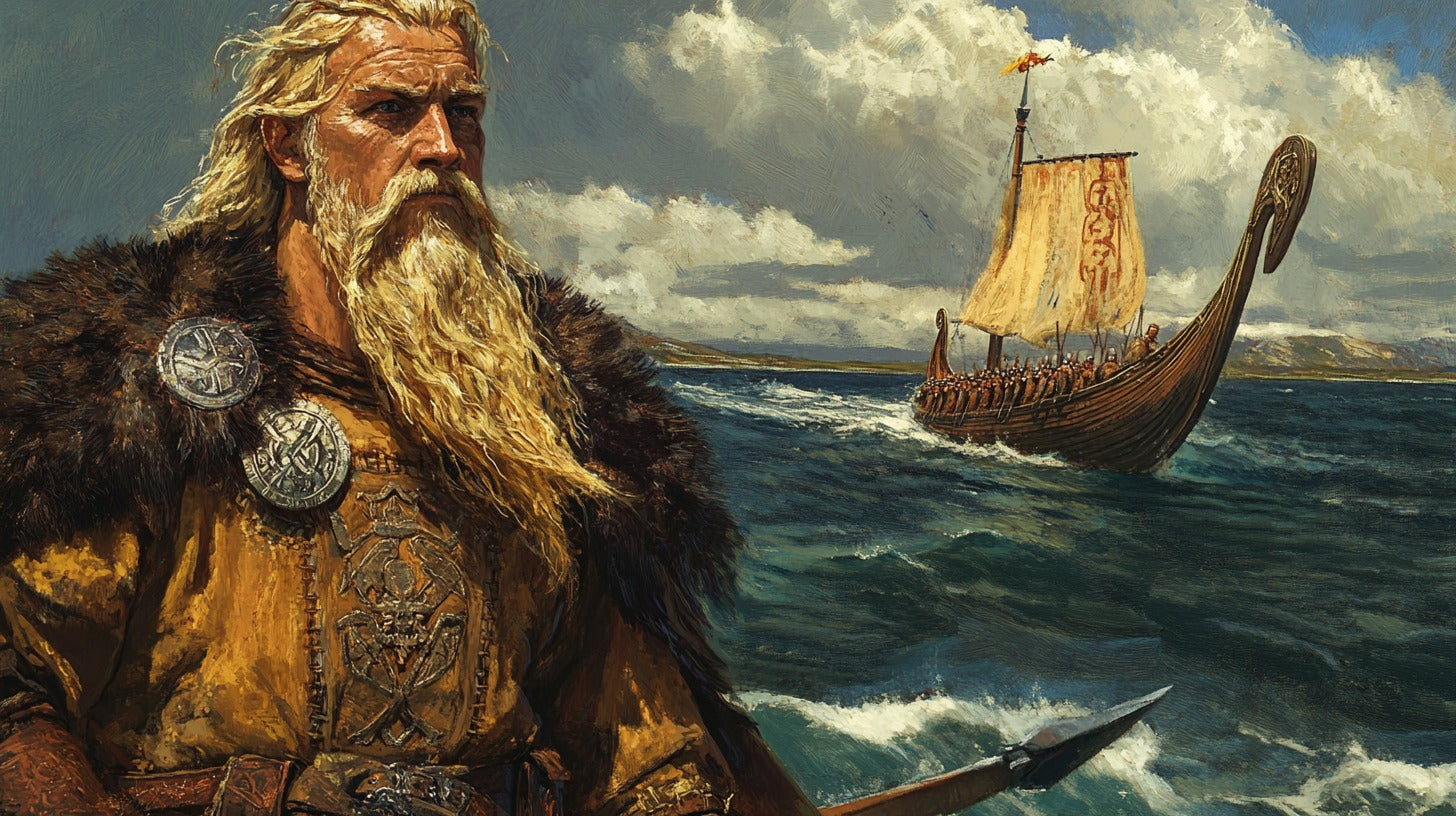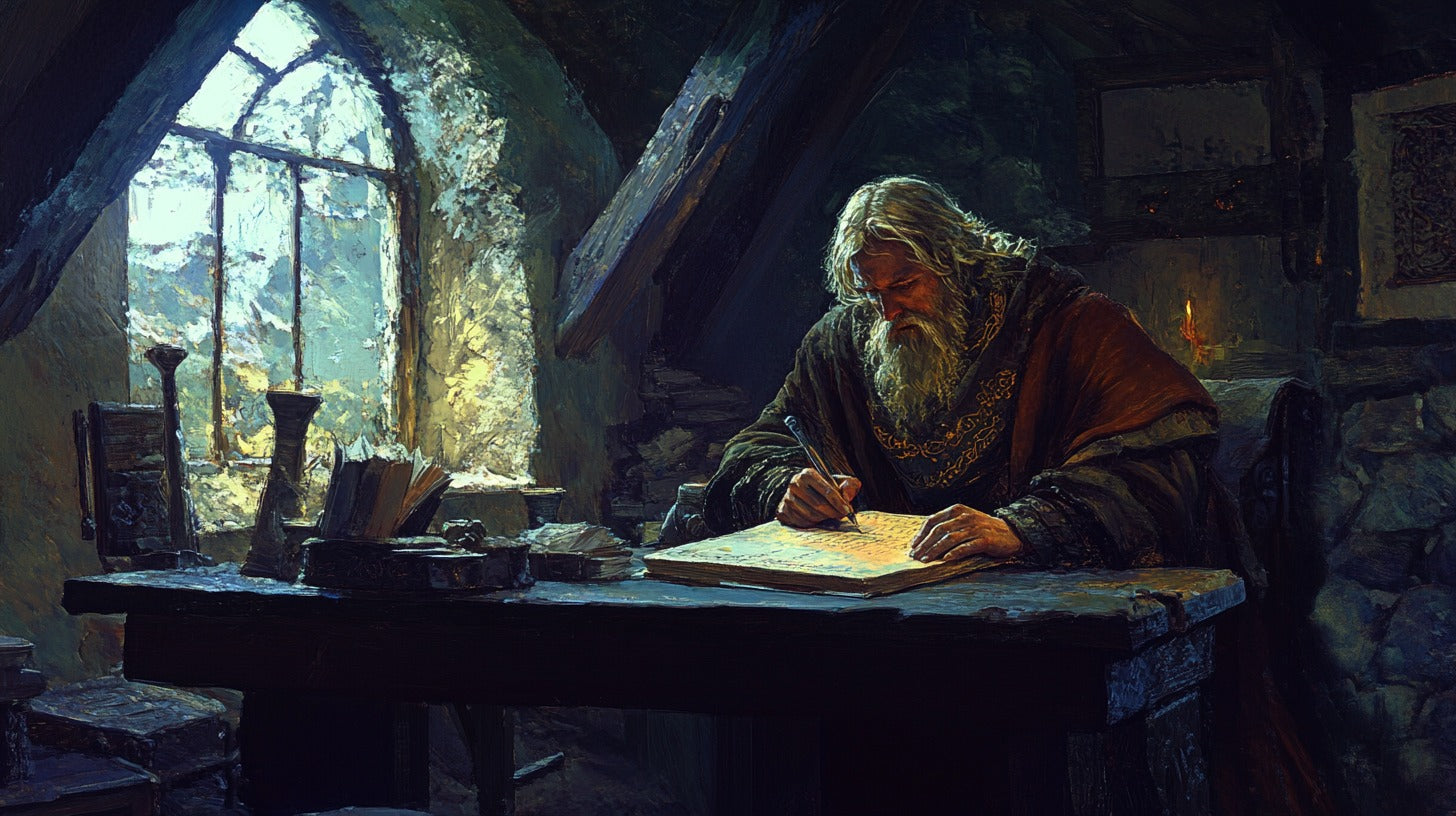
Cnut the Great: The Viking King Who Ruled an Empire
Have you ever wondered what it would be like to rule over a vast empire spanning multiple countries? Well, that's exactly what Cnut the Great did over a thousand years ago. This Viking king wasn't just another barbaric raider – he was a skilled politician, a savvy ruler, and a man who left an indelible mark on European history. Let's dive into the fascinating story of Cnut the Great and explore how he shaped the medieval world.
Early Life and Rise to Power
Viking Heritage
Born around 990 AD, Cnut (also spelled Canute) came from a lineage of Danish and Norwegian royalty. His father, Sweyn Forkbeard, was a formidable Viking leader who had his sights set on conquering England. Growing up in this environment, young Cnut was immersed in the warrior culture of the Vikings, but he also learned the finer points of leadership and statecraft.
Succession Struggles
When Sweyn Forkbeard died in 1014, the path to power wasn't straightforward for Cnut. He had to contend with rival claimants, including Æthelred the Unready of England and his own brother Harald. It was a baptism by fire for the young prince, forcing him to quickly develop the political acumen that would serve him well throughout his reign.
Conquests and Expansion

Medieval illustration from the Chronica Majora by Matthew Paris, depicting King Edmund (left) and King Cnut (right)
Invasion of England
Cnut wasted no time in following his father's footsteps. In 1015, he launched a massive invasion of England with a fleet of 200 longships. The campaign was a grueling affair, lasting nearly four years. But Cnut's persistence paid off – by 1019, he had secured control of the entire country. Not bad for a guy in his late twenties, right?
Consolidation of Power in Scandinavia
But England was just the beginning. Cnut turned his attention to his homeland, Denmark, where his brother Harald had been ruling. After Harald's death in 1018, Cnut swiftly moved to claim the Danish throne. Norway was next on his list, and by 1028, he had added it to his growing empire.
The North Sea Empire

The dominions of Cnut the Great / Illustration: Hel-hama, CC BY-SA 3.0
Unification of England, Denmark, and Norway
With control over England, Denmark, and Norway, Cnut had created what historians now call the "North Sea Empire." It was an impressive feat, bringing together diverse cultures and peoples under one ruler. Imagine trying to manage three different countries without modern communication technology – that's the challenge Cnut faced every day.
Challenges of Ruling a Vast Kingdom
Of course, ruling such a large empire came with its fair share of headaches. Cnut had to deal with rebellions, rival claimants, and the constant threat of invasion. He spent much of his time traveling between his realms, trying to keep everything together. It was like playing a giant game of medieval Whack-a-Mole, with problems popping up as soon as others were solved.
Cnut's Reign and Governance

Legal Reforms
Despite the challenges, Cnut proved to be a capable administrator. He implemented several legal reforms in England, issuing law codes that blended Anglo-Saxon and Danish traditions. These laws helped to create a more stable and just society, earning Cnut the respect of his English subjects.
Relationship with the Church
Cnut was a pragmatic ruler when it came to religion. Although he was a Christian convert, he understood the importance of working with the Church to maintain power. He became a generous patron of religious institutions, founding churches and monasteries across his empire.
Pilgrimage to Rome
In 1027, Cnut embarked on a pilgrimage to Rome – a journey that served both religious and political purposes. It was a chance to demonstrate his piety, but also to rub shoulders with other European rulers and the Pope himself. Talk about killing two birds with one stone!
Legacy and Impact
Runestone U 194 (in Sweden), in memory of a Viking known as Alli, says he won Knútr's payment in England / Photo: I. Berig, CC BY 2.5
Cultural Influence
Cnut's reign had a lasting impact on the cultures he ruled. In England, he helped to blend Anglo-Saxon and Norse traditions, creating a unique fusion that would influence the development of English culture for centuries to come. His patronage of the arts and literature also left a lasting legacy, with several important works produced during his reign.
Long-term Effects on European Politics
The North Sea Empire may have been short-lived, but its existence changed the political landscape of northern Europe. Cnut's rule demonstrated the potential for large-scale political unification in the region, setting the stage for future attempts at empire-building. His diplomatic ties with other European powers also helped to integrate Scandinavia more closely into the broader European political sphere.
Conclusion
Cnut the Great was more than just a Viking conqueror – he was a visionary leader who created one of the most impressive empires of his time. From his humble beginnings as a young prince to his status as ruler of a vast North Sea Empire, Cnut's life story reads like an epic saga. His reign was marked by military conquests, shrewd diplomacy, and forward-thinking governance.
While his empire didn't survive long after his death in 1035, Cnut's legacy lived on. He helped to shape the cultural and political landscape of northern Europe, leaving an indelible mark on history. The next time you hear someone mention "King Canute," you'll know there's much more to the story than a man trying to hold back the tides.
FAQs
- Was Cnut the Great really a Viking?
Yes, Cnut was of Viking descent and came from a line of Danish and Norwegian royalty. However, he was more than just a raider – he was a skilled ruler who adopted many of the customs of the lands he conquered.
- How long did Cnut's North Sea Empire last?
Cnut's empire reached its peak around 1028 and lasted until his death in 1035. After that, it quickly fragmented under his successors.
- Did Cnut really try to stop the tides?
This famous story is likely a later invention. It's more likely that Cnut was trying to demonstrate the limits of kingly power to his flattering courtiers, rather than actually believing he could control the sea.
- What languages did Cnut speak?
Cnut likely spoke Old Norse, Old English, and possibly Latin. As a ruler of a multi-ethnic empire, he needed to communicate with various groups.
- How did Cnut's rule affect the development of England?
Cnut's reign helped to stabilize England after years of Viking raids. His legal reforms and patronage of the Church laid important groundwork for the country's future development.
References
Lawson, M.K. (2011). Cnut: England's Viking King. The History Press.
Bolton, T. (2017). Cnut the Great. Yale University Press.
Trow, M.J. (2005). Cnut: Emperor of the North. Sutton Publishing.
Howard, I. (2005). Harthacnut: The Last Danish King of England. The History Press.
Forte, A., Oram, R., & Pedersen, F. (2005). Viking Empires. Cambridge University Press.









